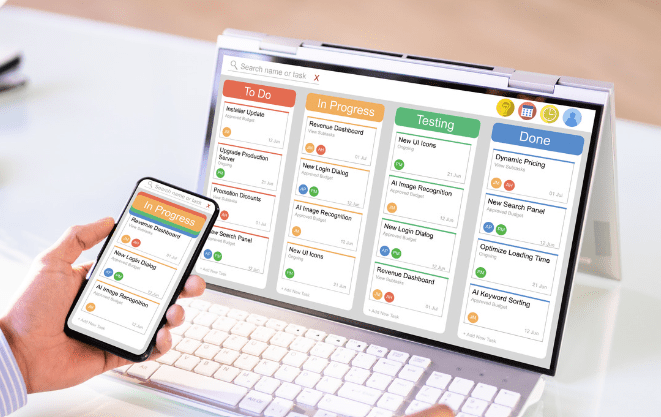The Synergistic Relationship between Product Management and User Experience In

In today’s digital landscape, creating successful products requires a deep understanding of user needs and delivering exceptional user experiences (UX). Two critical components that work hand in hand to drive innovation and create impactful solutions are product management and user experience. This article delves into the intricate relationship between these two disciplines, highlighting the significance of customer research, analytics, and business cases in informing product decisions and ensuring customer satisfaction.
Customer Research: Understanding User Needs
At the heart of effective product management lies a user-centric approach. To create products that truly resonate with users, product managers engage in comprehensive customer research. This process involves connecting with target users, empathizing with their pain points, and identifying their expectations and desires. By gathering deep user insights, product managers lay a solid foundation for designing intuitive and user-friendly experiences.
Analytics: Unleashing the Power of Data
Analytics plays a pivotal role in the symbiotic relationship between product management and UX. Data-driven decision-making empowers product managers to evaluate the effectiveness of existing features, understand user behavior, and identify areas for improvement. Through leveraging analytics tools, product managers gain valuable insights into user engagement, conversion rates, and user flows. These insights enable them to make informed decisions and prioritize product enhancements that positively impact the user experience.
Business Cases: Aligning User Needs with Business Objectives
Striking a delicate balance between user needs and business objectives is essential for product managers. To ensure the viability and success of a product, they rely on business cases that assess market demand, competitive landscape, and revenue potential. The business case provides a framework for aligning user needs with organizational goals, ensuring that product decisions are both user-centric and commercially viable. By combining user insights with business considerations, product managers can make strategic decisions that drive growth and deliver impactful solutions.
Driving Product Decisions for Optimal User Experience
The relationship between product management and user experience is most evident in driving product decisions. By integrating customer research, analytics, and business cases, product managers can identify pain points and prioritize features that address user needs while aligning with business objectives. The user experience is optimized through iterative development cycles that incorporate user feedback and continuous refinement. Product managers collaborate closely with designers, engineers, and other stakeholders to ensure that the product aligns with the desired user experience, constantly iterating and improving based on user insights and market dynamics.
Delivering Impactful Solutions
The ultimate goal of product management is to deliver impactful solutions that meet user expectations and drive business growth. By focusing on user experience, product managers create products that are intuitive, seamless, and delightful to use. The integration of customer research, analytics, and business cases empowers product managers to make informed decisions and prioritize features that have a real impact on the user experience. Regular testing, user feedback, and continuous improvement cycles ensure that the product evolves in response to changing user needs and market dynamics, ultimately leading to a successful and engaging user experience.
Conclusion
The relationship between product management and user experience is crucial in developing and delivering impactful solutions. Through customer research, analytics, and business cases, product managers gain valuable insights into user needs, align product decisions with business objectives, and create intuitive and delightful user experiences. The synergy between product management and UX drives innovation, enhances user satisfaction, and contributes to the success of a product. Emphasizing user-centricity and data-driven decision-making throughout the product development lifecycle leads to solutions that meet both user expectations and organizational goals. By prioritizing user needs and leveraging analytical insights, product managers can deliver transformative experiences that leave a lasting impact.







Product managers are responsible for understanding and translating customer needs into feature requirements. They must also define the project’s scope, create a timeline, coordinate internal resources, and manage external stakeholders. UX designers then take these requirements and create an experience that meets those needs. They work to ensure that users have an intuitive, enjoyable experience when using the product.
The two disciplines must work together to ensure a successful outcome. Product managers must understand what makes good UX to create meaningful features that meet customer needs. At the same time, UX designers need to know how customers use products to design effective interfaces that are easy to use. By working together, they can create practical and enjoyable products for users.
Product Management and User Experience are like peanut butter and jelly – they work best together. One without the other leaves you with a bland sandwich.
Hi, I appreciate your feedback. I enjoyed your sandwich analogy. Thank you.
Your article offers some valuable insights into the role that research data plays in customer satisfaction. In today’s world, data plays a crucial role and is at the heart of customer satisfaction. Data provides the valuable insights marketers can use to determine customer preferences, behavior, and expectations. By leveraging data effectively, businesses can understand their customers on a deeper level and tailor their products, services, and experiences accordingly.
Freat insights.